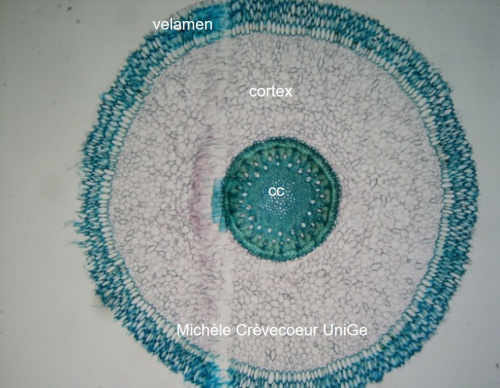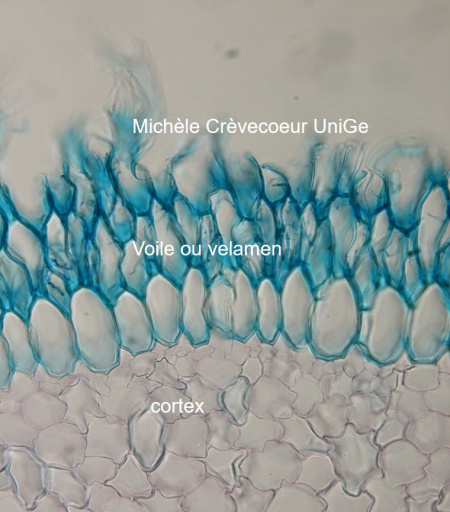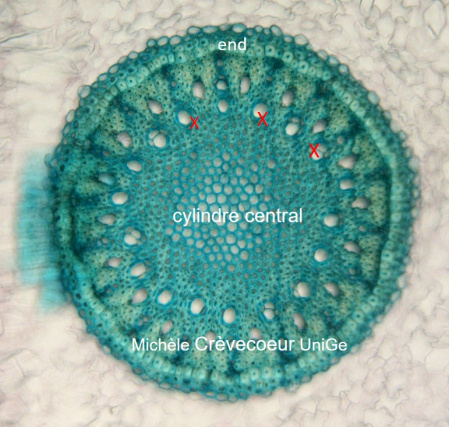Cross section through a root of Vanda
Vanda is an orchid belonging to Orchidaceae family. It is an epiphyte with aerial roots which have no contact to the soil. These special roots are capable of absorbing moisture from the air. Vanda is frequently cultivated in pots as a decorative plant.
The section is a cross section 100 µm thick made with a vibratome. After a bleaching treatment the sections were washed and stained with carmin – iodide green. The cellulosic walls are stained pink, and the lignified walls are stained green.
Below general aspect of the cross section. From outside towards the center we successively find the velamen, the cortex, the central cylinder (cc).
A characteristic of the aerial root is the development of a multilayered epidermis called “velamen”. In this cross section the velamen consists in two cell layers periclinally flattened and the outer layer has hairs. The cells of velamen are dead and have generally lignified walls. The third, innermost layer is exodermis with thinner walls and isolates the cortex from both exterior and from velamen. The cortex consists in parenchyma cells with thin cellulosic walls.


Velamen at higher magnification. The outermost layer shows hairs, outgrowth of the cells that allow absorption of humidity from the environment.

Detail of center of the section. The innermost layer of cortex, endodermis (end), is O – thickened with thick walls.
In the central cylinder, numerous xylem and phloem poles are disposed in alternance. They are embedded in a sclerenchyma, tissue with thick lignified walls. The patches of phloem are difficult to distinguish between xylem that have very thick walls.
Characteristics of this section: a small central cylinder, an extensive cortex, and numerous xylem poles alternating with phloem. It is a monocotyledon root. The velamen is typical of aerial root.